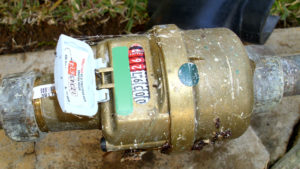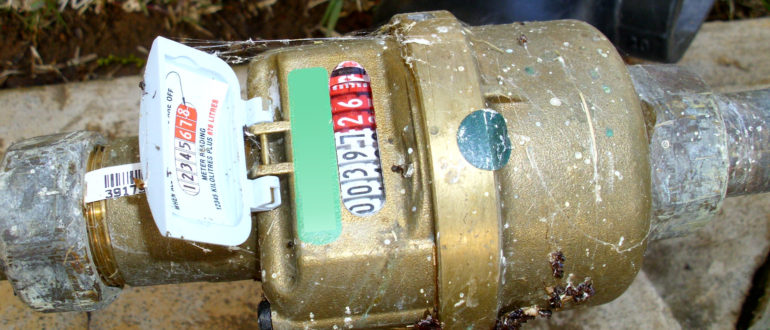Do you ever wonder how much water you’re using? Perhaps you’re concerned about potential water leaks that could cost you hundreds of dollars. Or you want to be more environmental-friendly. Whatever reason, reading your own water meter can be an important skill. The first step is to establish where exactly one’s water meter is located.
Typically, water meters are found near the front of one’s property. If you’re having difficulty, check just inside the fenceline. Now that the water meter has been found, you can understand the display system.
Before you can make sense of the presented numbers, you must first understand the type of display your water meter has. The two most common are a digital display and the dial face display. Now that you are more aware of the types of displays, you can accurately read the water meter.
 Reading your water meter can be a simple process once you realize what the numbers represent. For a digital display meter, there will be black numbers followed by a series of white numbers with a red background. Read these numbers from left to right. The black and white section represents kilolitres while the white numbers with a red background represent litres. For a dial face display meter, the numbers located on the top of the face resemble kilolitres. On the bottom half of the display, there will be four separate dials. Read these from right to left in order to obtain the number of litres. Add the total number of kilolitres and litres to get your water usage. Now that you have read your water meter, how can you use this information?
Reading your water meter can be a simple process once you realize what the numbers represent. For a digital display meter, there will be black numbers followed by a series of white numbers with a red background. Read these numbers from left to right. The black and white section represents kilolitres while the white numbers with a red background represent litres. For a dial face display meter, the numbers located on the top of the face resemble kilolitres. On the bottom half of the display, there will be four separate dials. Read these from right to left in order to obtain the number of litres. Add the total number of kilolitres and litres to get your water usage. Now that you have read your water meter, how can you use this information?
Reading your water meter will help you can monitor your water use. This will be important to ensure that your water bills don’t skyrocket. Additionally, you may want to check for water leak through regularly checking the meter. To find out how much water you’re using daily, record the numbers off of the water meter’s display. Again record the meter reading in seven days. The weekly water use is found by subtracting your first reading from your second reading. Once you have calculated this total, divide your weekly water use by seven. This will give you the daily water use. Keep tabs on your weekly and daily totals to find your averages. Checking for leaks is equally important.
In order to check for a leak, you must choose a time when no water is being used by anyone in the household. You might decide to do this once everyone has gone to sleep, ensuring that no one will flush the toilet overnight. Record your water meter reading before you go to bed. Read the same display in the morning before any water is used. If the number has increased, then you could potentially have a leak. If this happens, be sure to call a professional to check it out. Reading your water meter can save you from an expensive bill that may otherwise be unforeseeable.
Reading your water meter might sound complicated, but in reality is a simple action. By keeping track of the water you use in your household, you can see when more water is being used compared to an average week. Additionally, reading your water meter can save you a costly bill caused by leaks.

